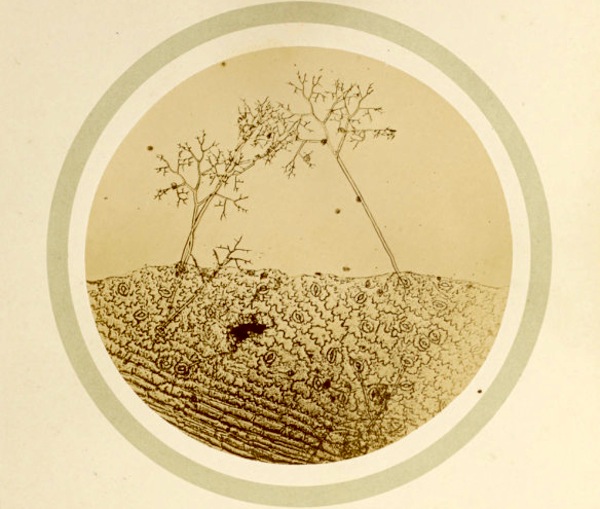It dwells miles down,m monrroe the erotice review nearly freezing in perpetual darkness, equipped with numerous appendages to capture prey.
Deep Sea biologists found a new animal some 26,000 feet (7,902 meters) underwater in the ocean's "hadal zone," named for the Greek god of the underworld, Hades. These researchers lowered baited traps into the Atacama Trench off of Chile, and brought up four individuals of a species now called Dulcibella camanchaca.
"Dulcibella camanchaca is a fast-swimming predator that we named after 'darkness' in the languages of the peoples from the Andes region to signify the deep, dark ocean from where it predates," Johanna Weston, a hadal ecologist at the Woods Hole Oceanographic Institution who coauthored the discovery, said in a statement.
In the hadal zone, the deepest ocean realm, many critters depend on food sinking down from the more productive waters above. But Dulcibella camanchaca isn't a scavenger. The four-centimeter (1.5-inch) crustacean (an arthropod with a hard shell like a crab) captures smaller hadal crustaceans.
"This finding underlines the importance of continued deep-ocean exploration, particularly in Chile’s front yard," Carolina González, a researcher at the Instituto Milenio de Oceanografía who analyzed the species' DNA, said. "More discoveries are expected as we continue to study the Atacama Trench."
The research has been published in the science journal Systematics and Biodiversity.
 The location of the Dulcibella camanchaca discovery in the Atacama Trench. Credit: Johanna Weston / Woods Hole Oceanographic Institution
The location of the Dulcibella camanchaca discovery in the Atacama Trench. Credit: Johanna Weston / Woods Hole Oceanographic Institution  An illustration of the predatory Dulcibella camanchaca and its "raptorial appendages." Credit: Johanna Weston / Woods Hole Oceanographic Institution
An illustration of the predatory Dulcibella camanchaca and its "raptorial appendages." Credit: Johanna Weston / Woods Hole Oceanographic Institution Even in the deepest ocean, predators can flourish, such as a snailfish spotted at 27,349 feet (8,336 meters) down — the deepest fish ever observed. They are flabby, jelly-like fish that binge eat when they spot hadal prey, such as crustaceans.
Ocean research organizations are now vigilantly documenting and mapping the deep sea. Scientists want to shine a light — literally and figuratively — on what's down there. The implications of knowing are incalculable, particularly as deep sea mineral prospectors prepare to run tank-like industrial equipment across parts of the seafloor. For example, research expeditions have found that ocean life carries great potential for novel medicines. "Systematic searches for new drugs have shown that marine invertebrates produce more antibiotic, anti-cancer, and anti-inflammatory substances than any group of terrestrial organisms," notes the National Oceanic and Atmospheric Administration.
Topics Animals
(Editor: {typename type="name"/})
 John O’Hara’s “Pal Joey” at 75: Still an Exemplary Novella
John O’Hara’s “Pal Joey” at 75: Still an Exemplary Novella
 Living on a Tolstoyan Commune
Living on a Tolstoyan Commune
 Photography Incubabula: How Early Photographs Got in Books
Photography Incubabula: How Early Photographs Got in Books
 Bestway Hydro
Bestway Hydro
NYT Connections hints and answers for April 14: Tips to solve 'Connections' #673.
 Connectionsis the one of the most popular New York Times word games that's captured the public's att
...[Details]
Connectionsis the one of the most popular New York Times word games that's captured the public's att
...[Details]
The Worst Thing for Writing Is Envy
 No One Should Envy a Writer, and Other NewsBy Dan PiepenbringFebruary 3, 2016On the ShelfEdvard Munc
...[Details]
No One Should Envy a Writer, and Other NewsBy Dan PiepenbringFebruary 3, 2016On the ShelfEdvard Munc
...[Details]
How to Be Perfect: An Illustrated Poem by Ron Padgett
 ResolutionsBy Jason Novak & Ron PadgettJanuary 4, 2016LookJason Novak, whose drawings accompany
...[Details]
ResolutionsBy Jason Novak & Ron PadgettJanuary 4, 2016LookJason Novak, whose drawings accompany
...[Details]
John Clare, Christopher Smart, and the Poetry of the Asylum
 In the MadhouseBy Max NelsonJanuary 5, 2016Prison LitJohn Clare, Christopher Smart, and the poetry o
...[Details]
In the MadhouseBy Max NelsonJanuary 5, 2016Prison LitJohn Clare, Christopher Smart, and the poetry o
...[Details]
SpaceX lands its first rocket on West Coast ground: Watch
 SpaceX has just successfully landed its first rocket on the U.S. West Coast.After launching a satell
...[Details]
SpaceX has just successfully landed its first rocket on the U.S. West Coast.After launching a satell
...[Details]
Isak Dinesen’s Art Is as Good as Her Writing
 The Gayety of VisionBy Sadie SteinJanuary 25, 2016Our Daily CorrespondentKaren Blixen in Copenhagen,
...[Details]
The Gayety of VisionBy Sadie SteinJanuary 25, 2016Our Daily CorrespondentKaren Blixen in Copenhagen,
...[Details]
Queen Bitch: Alex Abramovich on David Bowie
 Queen BitchBy Alex AbramovichJanuary 11, 2016In MemoriamA still from the “Blackstar” video.Two days
...[Details]
Queen BitchBy Alex AbramovichJanuary 11, 2016In MemoriamA still from the “Blackstar” video.Two days
...[Details]
Sixty Years of The Paris Review’s Design: A History
 We’ve Got Spines for Everyone, and Other NewsBy Dan PiepenbringJanuary 22, 2016On the ShelfCollect ’
...[Details]
We’ve Got Spines for Everyone, and Other NewsBy Dan PiepenbringJanuary 22, 2016On the ShelfCollect ’
...[Details]
SpaceX's Starlink will provide free satellite internet to families in Texas school district
 To help close the digital divide, SpaceX will offer satellite internet to the education sector.The c
...[Details]
To help close the digital divide, SpaceX will offer satellite internet to the education sector.The c
...[Details]
Forman Brown and Albert Einstein’s Marionette
 RelativityBy Sadie SteinJanuary 21, 2016Our Daily CorrespondentEinstein with puppet.I inquired about
...[Details]
RelativityBy Sadie SteinJanuary 21, 2016Our Daily CorrespondentEinstein with puppet.I inquired about
...[Details]
Quality Assured: What It's Really Like To Test Games For A Living
Last Chance: Get a Free Copy of “The Unprofessionals”

接受PR>=1、BR>=1,流量相当,内容相关类链接。